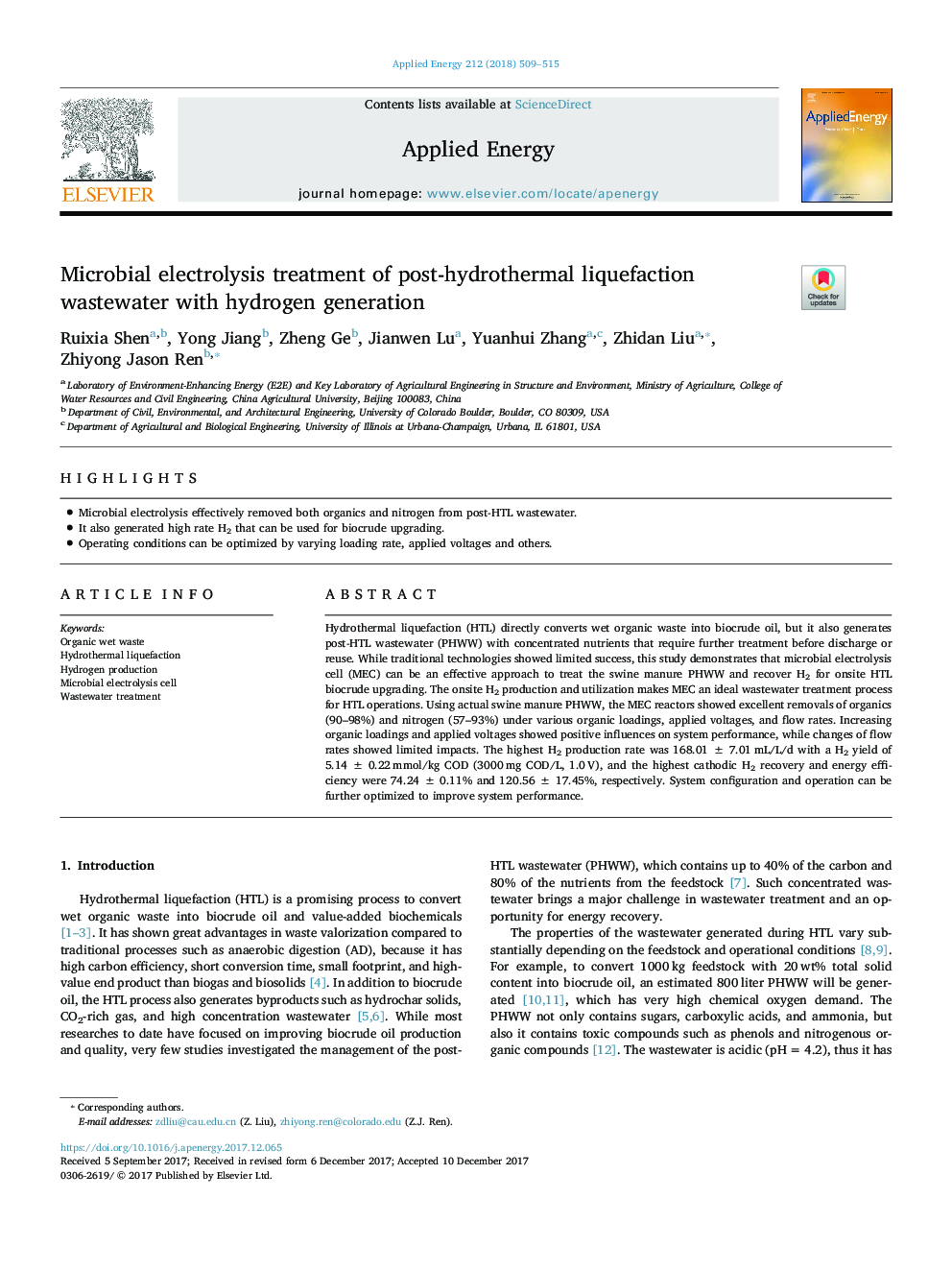| Article ID | Journal | Published Year | Pages | File Type |
|---|---|---|---|---|
| 6680949 | Applied Energy | 2018 | 7 Pages |
Abstract
Hydrothermal liquefaction (HTL) directly converts wet organic waste into biocrude oil, but it also generates post-HTL wastewater (PHWW) with concentrated nutrients that require further treatment before discharge or reuse. While traditional technologies showed limited success, this study demonstrates that microbial electrolysis cell (MEC) can be an effective approach to treat the swine manure PHWW and recover H2 for onsite HTL biocrude upgrading. The onsite H2 production and utilization makes MEC an ideal wastewater treatment process for HTL operations. Using actual swine manure PHWW, the MEC reactors showed excellent removals of organics (90-98%) and nitrogen (57-93%) under various organic loadings, applied voltages, and flow rates. Increasing organic loadings and applied voltages showed positive influences on system performance, while changes of flow rates showed limited impacts. The highest H2 production rate was 168.01â¯Â±â¯7.01â¯mL/L/d with a H2 yield of 5.14â¯Â±â¯0.22â¯mmol/kg COD (3000â¯mg COD/L, 1.0â¯V), and the highest cathodic H2 recovery and energy efficiency were 74.24â¯Â±â¯0.11% and 120.56â¯Â±â¯17.45%, respectively. System configuration and operation can be further optimized to improve system performance.
Keywords
Related Topics
Physical Sciences and Engineering
Energy
Energy Engineering and Power Technology
Authors
Ruixia Shen, Yong Jiang, Zheng Ge, Jianwen Lu, Yuanhui Zhang, Zhidan Liu, Zhiyong Jason Ren,
